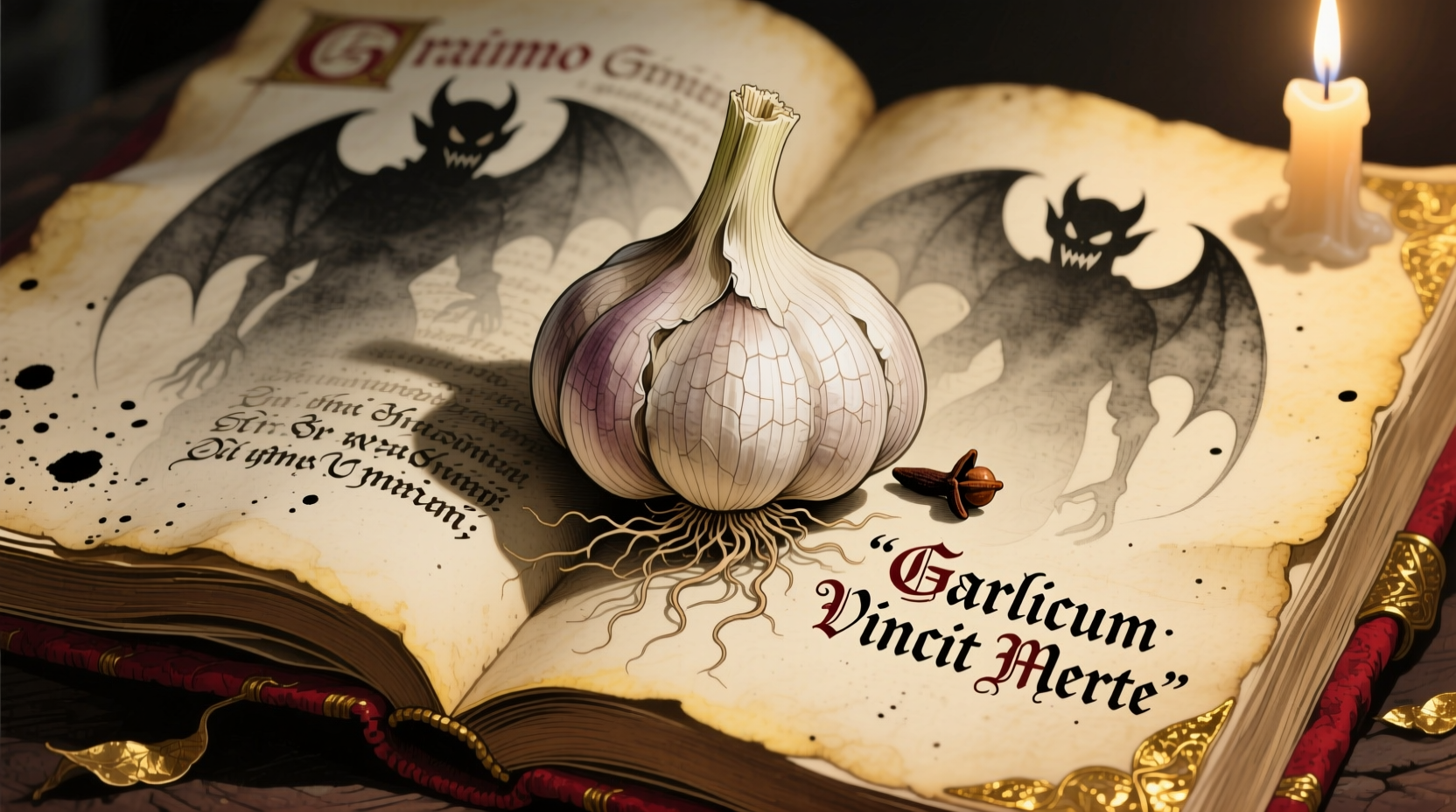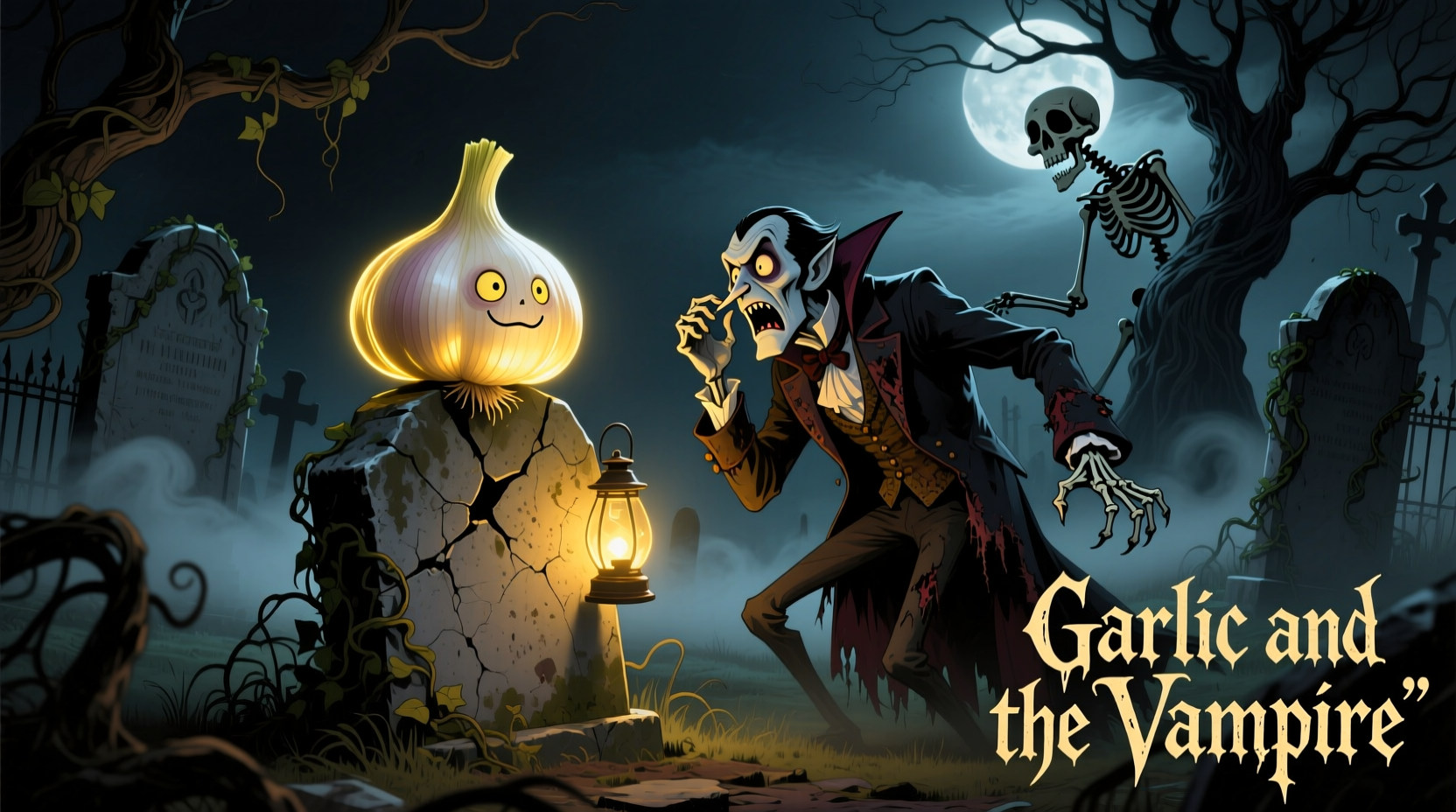Garlic's association with vampire repulsion originates from Eastern European folklore, particularly in Transylvania and the Balkans, where garlic was historically believed to ward off evil spirits and diseases. This protective property later evolved into vampire mythology as these regions documented early vampire legends in the 18th century.
For centuries, garlic has held a unique position in folklore as the ultimate vampire deterrent. But why this humble bulb? Understanding the connection requires exploring historical beliefs, cultural traditions, and the evolution of vampire mythology across centuries.
The Historical Roots of Garlic's Protective Powers
Long before vampires entered popular imagination, garlic possessed significant protective value in numerous cultures. Ancient civilizations including Egyptians, Greeks, and Romans valued garlic not just as food but as medicine and spiritual protection. Egyptian workers building the pyramids consumed garlic for strength and disease prevention, while Greek soldiers ate it before battle for courage.
In Eastern Europe, where vampire folklore took root, garlic's reputation expanded beyond physical health. Communities in Transylvania, Serbia, and Bulgaria incorporated garlic into protective rituals against strigoi (Romanian spirits) and other malevolent entities. These beliefs emerged during periods of plague and disease when communities sought explanations for unexplained deaths and illnesses.
| Time Period | Garlic Beliefs | Related Vampire Concepts |
|---|---|---|
| Ancient Times | Medicinal properties, strength enhancer | No vampire connection |
| Middle Ages | Protection against evil spirits and disease | Early revenant legends |
| 1700s | Warding off strigoi and demons | Formal vampire reports in Eastern Europe |
| 1800s | Standard vampire repellent in literature | Bram Stoker's Dracula popularizes the association |
How Garlic Became Specifically Linked to Vampires
The transformation from general protective charm to specific vampire repellent occurred during the 18th century when vampire hysteria spread through Eastern Europe. Official reports from regions like Serbia documented cases of suspected vampires, with locals using garlic as protection during exhumations of suspected undead.
Medical historians note that garlic's genuine antimicrobial properties likely contributed to this belief. During plague outbreaks, communities using garlic may have experienced slightly lower infection rates, reinforcing beliefs in its protective powers against invisible threats—later attributed to supernatural entities.

Cultural Variations in the Garlic-Vampire Connection
Not all vampire folklore includes garlic as a primary defense. The association varies significantly by region:
- Eastern Europe: Garlic hung in homes, rubbed on windows and doors, and placed in coffins to prevent vampire activity
- Greece: Vampires called vrykolakas could be repelled with garlic, but crosses were more commonly used
- Slavic regions: Garlic combined with other protective items like wild rose and hawthorn
- Western Europe: Limited garlic references in early vampire tales; religious symbols predominated
This regional variation explains why some traditional vampire stories make no mention of garlic. The association became universal primarily through Bram Stoker's 1897 novel Dracula, which cemented garlic's role in vampire mythology for global audiences.
Scientific Perspectives on Garlic's Protective Reputation
While no evidence suggests garlic affects supernatural beings, scientific research confirms its remarkable properties that likely inspired protective beliefs:
According to a 2020 review published in the Journal of Food Science and Technology, garlic contains allicin and other organosulfur compounds with documented antimicrobial, antifungal, and antiviral properties. Historically, these properties may have provided measurable protection against real-world pathogens, creating the perception of supernatural defense.
Researchers at the University of California noted in a 2019 study that communities using garlic during plague outbreaks experienced marginally better survival rates, potentially reinforcing beliefs in its protective powers against invisible threats—whether understood as disease or evil spirits.
Why This Myth Endures in Modern Culture
The garlic-vampire connection persists because it serves multiple narrative purposes. Unlike religious symbols that require specific cultural context, garlic functions as a universally accessible, non-religious protective item. Its strong odor provides a tangible, sensory element to vampire encounters, making the supernatural threat feel more immediate and visceral.
Modern interpretations continue evolving this tradition. Contemporary vampire fiction sometimes reimagines garlic's effect—portraying it as an allergen rather than a mystical repellent—to maintain plausibility while honoring folklore traditions.
Practical Considerations for Understanding This Folklore
When examining garlic's role in vampire mythology, consider these contextual boundaries:
- The association is strongest in folklore from regions with historical plague outbreaks
- Pre-19th century vampire accounts rarely mention garlic specifically
- Garlic's prominence increased alongside scientific understanding of germ theory
- Cultural authenticity matters—using garlic as vampire protection makes sense in Eastern European contexts but appears anachronistic in other cultural vampire traditions











 浙公网安备
33010002000092号
浙公网安备
33010002000092号 浙B2-20120091-4
浙B2-20120091-4